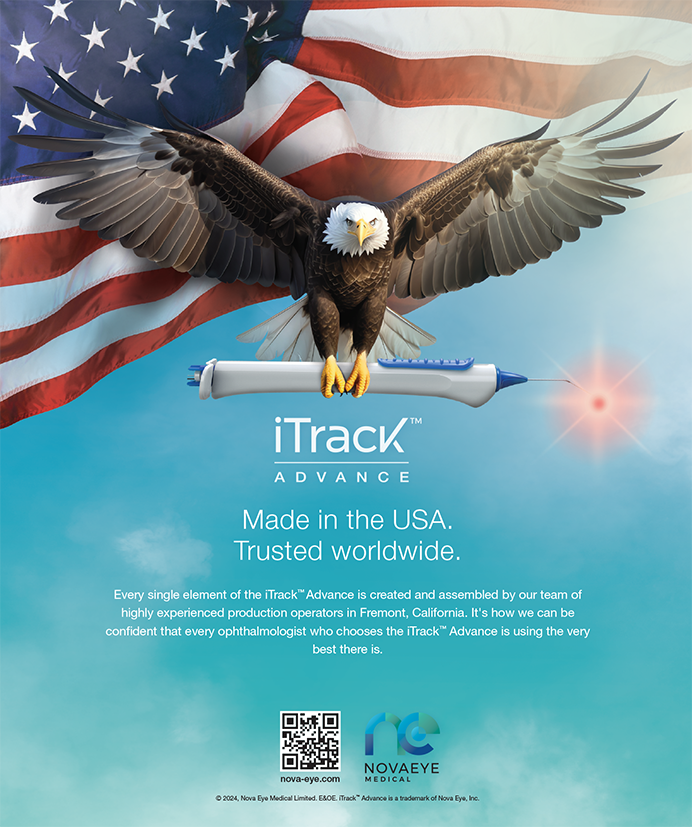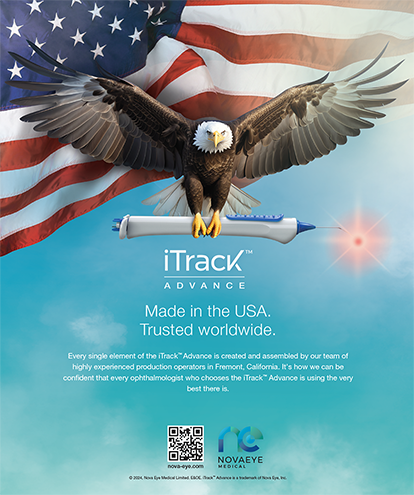
Fifty years ago, cataract surgery saw the beginning of a revolution that took 2 to 3 decades to finally become uniformly accepted and practiced: phacoemulsification. Although phacoemulsification would prove to be a huge improvement, adoption lagged because of both the learning curve and the need for technology to evolve to make it safe.
I believe we are on the verge of another leap forward, currently practiced by only a handful of surgeons around the world: primary posterior optic capture (POC). How long will it take this time for the paradigm shift to become routine practice?
When it comes time for your own cataract surgery, wouldn’t you prefer a surgery that not only permits rapid visual rehabilitation but also provides the very best, most stable, clear visual axis for the rest of your life? Don’t you want to provide the same for your patients? The way to achieve this goal today—and ever since it was first described in the 1990s—is with POC. With POC, the haptics are in the bag, and the optic of the IOL is suspended in Berger space through a hyaloid-sparing continuous posterior capsulotomy, thereby preserving the two-chambered eye for the life of the patient.
Performing this extra surgical step requires a short, though steep, learning curve without new technology. The manual rhexis technique is available to all, and off-label femtosecond laser and other automated technologies and cost-effective instrumentation are in development by others and by me.
The benefits of POC are legion: We minimize stray light, eradicate secondary cataract at all ages, provide a predictable effective lens position, and stabilize the two-chambered eye. Prospective, fellow-eye, peer-reviewed evidence of safety has been established.1-3
Long-term studies are still needed to prove true superiority of POC over in-the-bag placement. Rationally, however, we would expect reduced morbidity of the macula, retina, and trabecular meshwork known to be associated with rupture of the anterior hyaloid, whether primary or unintended intraoperatively or due to secondary laser capsulotomy postoperatively.
Little attention has been paid to the anatomy of the retrolenticular space and its significance in recent years. New technologies such as intraoperative OCT and swept-source OCT finally confirm anatomic and pathologic observations made in the 16th and 17th centuries and seemingly forgotten. New evidence is helping to explain the mechanisms of accommodation and the etiology of misdirected aqueous.4
Future techniques now under evaluation include my own concept of hyaloid-sparing double capture (HSDC), with the haptics in the sulcus rather than the bag and the optic in Berger space without vitrectomy. This approach may prove to have the additional benefits of minimizing the advancing epidemic of bag-lens complex subluxation and improving results for uveitic patients. Current and future lens designs, including the Bag-In-The-Lens IOL (Morcher; not FDA approved), will provide other advantages and opportunities such as reduced lens epithelial cell metaplasia. Eliminating the square IOL edge reduces dysphotopsia. However, any non–plate-haptic IOL available today can be successfully employed for POC right now.
Every anterior segment surgeon should be aware of the value of the six types of optic capture and be facile in converting an inadvertent posterior capsular tear into a strong and dependable continuous posterior rhexis. The biggest benefits of primary posterior capsulotomy and POC would accrue to patients who cannot sit for an Nd:YAG posterior capsulotomy, pediatric patients older than 6 months, patients who have cataracts with unpolishable plaques, patients with posterior polar cataracts, and myopes. Toric lenses would never rotate once captured.
Truthfully, though, who would not benefit from the assurance of undergoing one surgery for a lifetime of clear optics? Society certainly would be an economic beneficiary, in both the developed and the developing world.
This issue of CRST gives you the keys to the ranch. I am proud to have the world’s experts on management of the posterior capsule and optic capture offering their collective knowledge, wisdom, and experience here to both inform and intrigue you. Enjoy, I hope, with an open mind and a ready hand!
Lisa Brothers Arbisser, MD
Guest Medical Editor
1. Menapace R. Posterior capsulorhexis combined with optic buttonholing: an alternative to standard in-the-bag implantation of sharp-edged intraocular lenses? A critical analysis of 1000 consecutive cases. Graefes Arch Clin Exp Ophthalmol. 2008;246(6):787-801.
2. Stifter E, Menapace R, Kriechbaum K, et al. Effect of primary posterior continuous curvilinear capsulorhexis with and without posterior optic buttonholing on postoperative anterior chamber flare. J Cataract Refract Surg. 2009;35(3):480-484.
3. De Groot V, Hubert M, Van Best JA, et al. Lack of fluorophotometric evidence of aqueous-vitreous barrier disruption after posterior capsulorhexis. J Cataract Refract Surg. 2003;29(12):2330-23388.
4. Lütjen-Drecoll E, Kaufman PL, Wasielewski R, et al. Morphology and accommodative function of the vitreous zonule in human and monkey eyes. Invest Ophthalmol Vic Sci. 2010;51(3):1554-1564.




